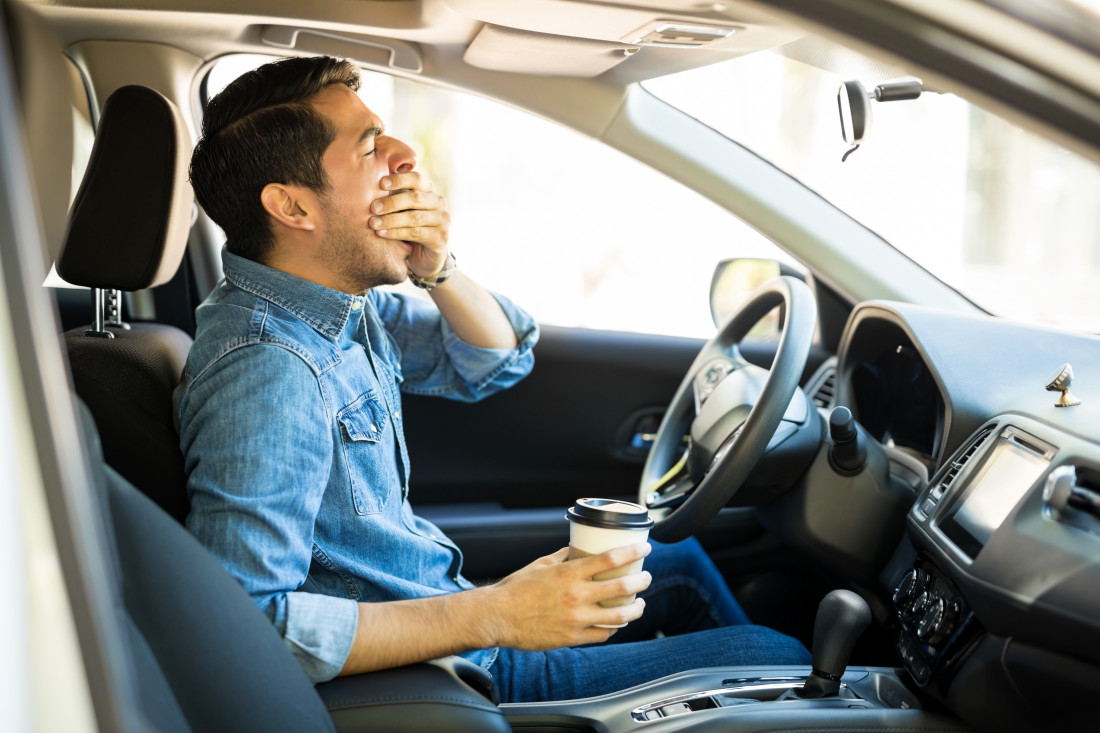
A fatigued driver without having slept in 20 hours is affected in the same manner as a driver with a blood alcohol content of .08 percent – clearly a point that resonates at trial and will present as an easy argument at trial. The effects of drowsy driving are substantial. Dozing off for seconds, or being distracted for a similar amount of time, can result in a driver traveling up to the length of a football field before they regain their senses.
While there is little law on the books regarding non-commercial drivers (only New Jersey and Arkansas have codified drowsy driving) trucks and buses traveling in interstate commerce are governed by the Federal Motor Safety Regulations. The FMCSR dictates the number of hours drivers can travel before taking mandatory breaks. But the most important item the FMCSR dictates is requiring drivers to keep logs for the on and off duty time. This is particularly significant for trucking companies[1], as Plaintiff’s firms will typically send a spoliation letter to the company asking them to preserve their log books and electronic log records so they know the driver’s history. Log records must be preserved for 6 months after a crash. It is imperative for trucking companies to keep these records so defense counsel can provide an adequate defense and to avoid motion practice during litigation about spoliation of evidence and the presumptions that come with them.
While paper logs are preserved, trucking companies also employ electronic records. Though the driver cannot alter electronic records, the trucking companies themselves do have this capability. In order to ensure the records are kept properly and are not altered, Plaintiff’s firms have resorted to hiring experts (particularly forensic experts) to analyze the log books and electronic data. Defense firms may wish to consider hiring their own forensic experts at the outset of a case in order to determine whether any manipulation has occurred. Clearly, findings indicating electronic manipulation will alter the defense plan and strategy.
At trial, a proper way to direct and cross-examine experts is to use language and rules set out in the Commercial Driver’s License (CDL) manual. Plaintiff’s firms can use the language directly, which is easily understood by jurors and lay persons, in order to show that the defendant driver was driving improperly or fatigued. Conversely, defendants can use the rules to show that the driver was alert and doing everything possible to ensure public safety.
In addition to the law and rules set out above, industry professionals will want to consider and examine how their driver became fatigued. While avoiding sleep is a clear cause of fatigue, lack of exercise, poor eating habits and leading an unhealthy life all contribute to driver fatigue. Additionally, whether a driver is getting “quality sleep” is a major factor in contributing to drowsiness. Taking sleep medication, such as Ambien, will simply knock out the higher range of the brain’s cortex and will prevent cells from firing. As a result, the driver never has stage IV in-REM sleep. Other factors that lead to chronic sleep deprivation include obesity, insomnia, sleep apnea, and even restless leg syndrome.
After a case has been evaluated and oral discovery begins, a capable Plaintiff’s counsel will work carefully to show drowsiness was a factor in the accident. Proving a driver dozed off before a crash is nearly impossible because a dozing driver simply will not recall falling asleep. Instead, the Plaintiff’s attorney will walk the driver step-by-step through the events leading up to the accident. Frequently, drivers will say they were not able to stop in time, there were no obstructions and no reason they could not stop in time. The Plaintiff’s attorney will then use the records and logs to attempt to show the driver was fatigued. They are not necessarily trying to prove the driver was lying, but rather to show that the driver was human and fatigue is an important factor. There is some element of speculation regarding these theories, thus expert testimony has developed as a tool to prove and disprove fatigue.
Indeed, Plaintiff and defense attorneys employ sleep experts, sleep physiology experts and accident reconstructionists in order to show a driver was or was not fatigued. Unfortunately, there is little-to-no law regarding Daubert challenges and sleep experts in trucking accidents. In Darling v. JB Expedited Services, Inc., 2006 WL 2238913 (M.D. Tenn. 2006), the Plaintiff satisfied a Daubert challenge regarding the use of a sleep expert. In Ryans v. Kock Foods LLC, 2015 LEXIS 179979 (E.D. Tenn. 2015) the judge simply determined that effects of fatigue on a driver are matters of common knowledge and do not require technical or scientific knowledge. Rather, it is a question of fact for the jury to determine what happened and it is speculation for a sleep expert to say a driver fell asleep before an accident occurred.
An emerging area that could see quite a bit of growth in the short term are through ride share businesses such as Uber and Lyft. While most think of ride share as utilizing a smaller vehicle to travel from one place to another, these services can still see liability through the usage of limousines, and similar services to Uber Freight or Uber Eats (depending on the size of the vehicle used to transport food). Uber Freight, which matches carriers with shippers, is particularly interesting, as it has experienced recent growth. In addition to the likelihood carriers utilizing Uber Freight would be held liable for accidents via interstate transportation, the third-party app might also incur liability under agency theories or respondeat superior.
In short, there are various areas transportation professions will want to consider after an accident in order to determine (1) whether fatigue caused or contributed to the underlying accident, and (2) what impact that has on the valuation of a particular case.
[1] A truck under the FMSR falls under this category if (1), the truck weighs 10,001 pounds, (2) the gross vehicle weight is over 10,001 pounds, (3) if there is a HazMat situation, (4) the truck is transporting 9 people for compensation (therefore, limousines qualify under this category), or (5) if the truck is transporting 16 people or more regardless of compensation.
Disclaimer: This is intended to educate generally on certain issues and is not intended to provide legal or professional advice. The information and opinions expressed in this document are solely those of the author and do not necessarily represent the view or opinions of any current or former clients of Segal McCambridge Singer & Mahoney, Ltd.
Photo: iStock.com/Antonio_diaz


